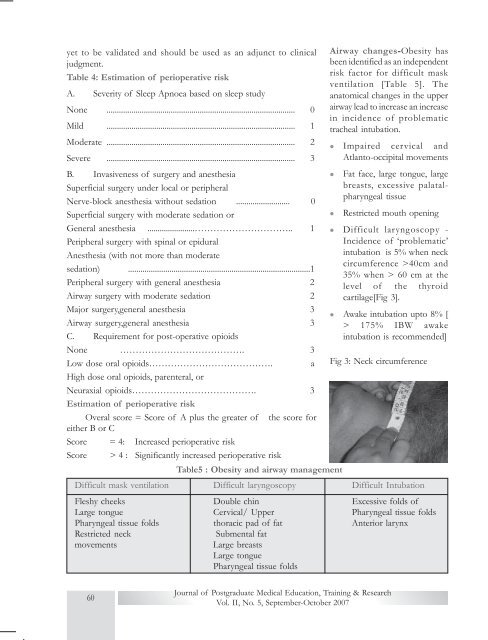National Board Ex- 6 Book .pmd - National Board Of Examination
National Board Ex- 6 Book .pmd - National Board Of Examination
National Board Ex- 6 Book .pmd - National Board Of Examination
You also want an ePaper? Increase the reach of your titles
YUMPU automatically turns print PDFs into web optimized ePapers that Google loves.
yet to be validated and should be used as an adjunct to clinicaljudgment.Table 4: Estimation of perioperative riskA. Severity of Sleep Apnoea based on sleep studyNone ........................................................................................... 0Mild ........................................................................................... 1Moderate ........................................................................................... 2Severe ........................................................................................... 3B. Invasiveness of surgery and anesthesiaSuperficial surgery under local or peripheralNerve-block anesthesia without sedation .......................... 0Superficial surgery with moderate sedation orGeneral anesthesia .......................………………………….. 1Peripheral surgery with spinal or epiduralAnesthesia (with not more than moderatesedation) ........................................................................................1Peripheral surgery with general anesthesia 2Airway surgery with moderate sedation 2Major surgery,general anesthesia 3Airway surgery,general anesthesia 3C. Requirement for post-operative opioidsNone …………………………………. 3Low dose oral opioids…………………………………. aHigh dose oral opioids, parenteral, orNeuraxial opioids…………………………………. 3Estimation of perioperative riskOveral score = Score of A plus the greater of the score foreither B or CScore = 4: Increased perioperative riskScore > 4 : Significantly increased perioperative riskAirway changes-Obesity hasbeen identified as an independentrisk factor for difficult maskventilation [Table 5]. Theanatomical changes in the upperairway lead to increase an increasein incidence of problematictracheal intubation.l Impaired cervical andAtlanto-occipital movementsllFat face, large tongue, largebreasts, excessive palatalpharyngealtissueRestricted mouth openingl Difficult laryngoscopy -Incidence of ‘problematic’intubation is 5% when neckcircumference >40cm and35% when > 60 cm at thelevel of the thyroidcartilage[Fig 3].l Awake intubation upto 8% [> 175% IBW awakeintubation is recommended]Fig 3: Neck circumferenceTable5 : Obesity and airway managementDifficult mask ventilation Difficult laryngoscopy Difficult IntubationFleshy cheeks Double chin <strong>Ex</strong>cessive folds ofLarge tongue Cervical/ Upper Pharyngeal tissue foldsPharyngeal tissue folds thoracic pad of fat Anterior larynxRestricted neck Submental fatmovementsLarge breastsLarge tonguePharyngeal tissue folds60Journal of Postgraduate Medical Education, Training & ResearchVol. II, No. 5, September-October 2007
















